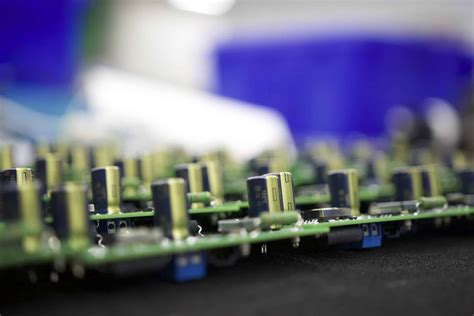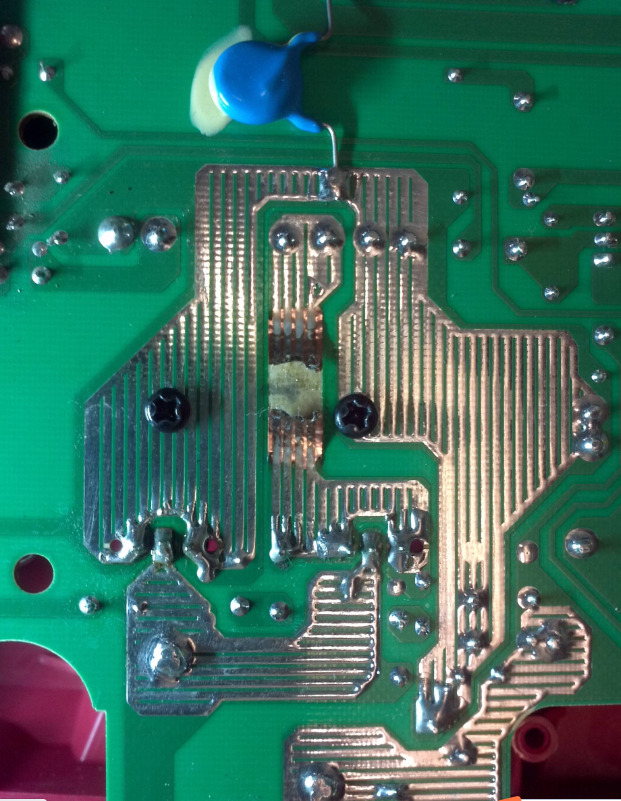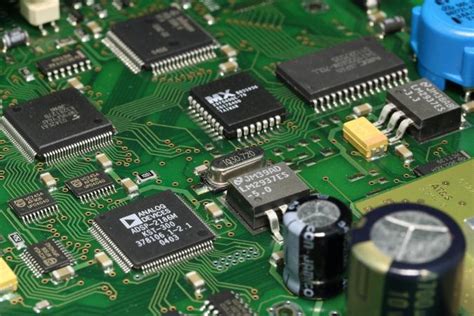Capacitive touch flex pcb
Advantages Of Using Capacitive Touch Flex PCBs In Modern Electronics
Capacitive touch flex PCBs have become a cornerstone in the design and functionality of modern electronic devices, offering a multitude of advantages that enhance both user experience and device performance. As technology continues to evolve, the demand for more intuitive and responsive interfaces has led to the widespread adoption of capacitive touch technology, which is seamlessly integrated into flexible printed circuit boards (PCBs). This integration not only optimizes the functionality of electronic devices but also contributes to their sleek and compact design.
One of the primary advantages of using capacitive touch flex PCBs is their ability to provide a highly responsive and accurate touch interface.
Unlike resistive touchscreens, which rely on pressure, capacitive touchscreens detect touch through the electrical properties of the human body. This allows for a more sensitive and precise interaction, enabling users to execute commands with minimal effort. The accuracy of capacitive touch technology is particularly beneficial in applications where precision is paramount, such as in medical devices and industrial controls.
Moreover, the flexibility of these PCBs offers significant design advantages.
Flexible PCBs can be bent, folded, and shaped to fit into compact spaces, making them ideal for modern electronic devices that prioritize portability and ergonomic design. This flexibility allows manufacturers to create devices with innovative form factors without compromising on functionality. For instance, wearable technology, such as smartwatches and fitness trackers, benefits greatly from the use of capacitive touch flex PCBs, as they can conform to the contours of the human body while maintaining a high level of performance.
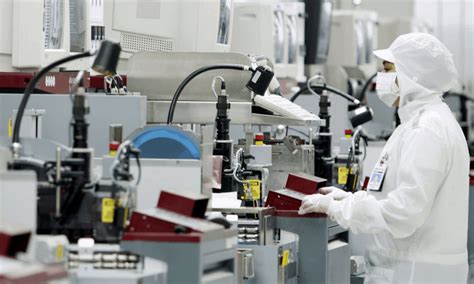
In addition to their design versatility, capacitive touch flex PCBs contribute to the durability and reliability of electronic devices.
The absence of mechanical components in capacitive touchscreens reduces the likelihood of wear and tear, resulting in a longer lifespan compared to traditional input methods. Furthermore, the materials used in flexible PCBs are often resistant to environmental factors such as moisture and temperature fluctuations, enhancing the overall robustness of the device. This durability is particularly advantageous in consumer electronics, where devices are frequently exposed to varying conditions.
Another noteworthy benefit is the potential for cost savings in the manufacturing process.
The integration of capacitive touch technology into flexible PCBs can streamline production by reducing the number of components required and simplifying assembly. This can lead to lower production costs and, ultimately, more affordable products for consumers. Additionally, the reduced weight and size of devices utilizing flexible PCBs can result in lower shipping and handling costs, further contributing to economic efficiency.
Furthermore, capacitive touch flex PCBs support the development of energy-efficient devices.
The low power consumption of capacitive touch technology is a critical factor in extending battery life, which is a key consideration for portable electronics. This energy efficiency not only benefits consumers by providing longer usage times but also aligns with the growing emphasis on sustainability in the electronics industry.
In conclusion, the advantages of using capacitive touch flex PCBs in modern electronics are manifold, encompassing enhanced user interaction, design flexibility, durability, cost-effectiveness, and energy efficiency. As the demand for innovative and efficient electronic devices continues to rise, the role of capacitive touch flex PCBs is likely to expand, driving further advancements in technology and shaping the future of electronic design.

Design Considerations For Capacitive Touch Flex PCBs
When designing capacitive touch flex PCBs, several critical considerations must be taken into account to ensure optimal performance and reliability. These flexible printed circuit boards, which integrate capacitive touch technology, are increasingly prevalent in modern electronic devices due to their versatility and ability to conform to various shapes and surfaces. As such, understanding the nuances of their design is essential for engineers and designers aiming to leverage their full potential.
To begin with, material selection plays a pivotal role in the design of capacitive touch flex PCBs.
The choice of substrate material affects not only the flexibility and durability of the PCB but also its electrical performance. Polyimide is commonly used due to its excellent thermal stability and mechanical properties, which are crucial for maintaining the integrity of the circuit under bending and flexing conditions. Additionally, the conductive materials, typically copper, must be carefully chosen and applied to ensure efficient signal transmission while minimizing resistance and potential interference.
Moreover, the layout of the capacitive touch sensors on the flex PCB is another vital consideration.
The sensors must be strategically placed to ensure accurate touch detection and responsiveness. This involves determining the optimal size and spacing of the sensor pads, which can vary depending on the intended application and the sensitivity required. Furthermore, the routing of traces connecting these sensors should be meticulously planned to avoid crosstalk and signal degradation, which can adversely affect the touch performance.
In addition to layout considerations, the integration of shielding and grounding techniques is essential to enhance the performance of capacitive touch flex PCBs. Electromagnetic interference (EMI) can significantly impact the accuracy of touch detection, making it imperative to incorporate effective shielding strategies.
This often involves the use of ground planes or additional shielding layers to protect the sensitive touch circuitry from external noise. Proper grounding also helps in maintaining signal integrity and reducing the risk of false touches or missed inputs.
Thermal management is another critical aspect that must not be overlooked in the design process. As electronic devices become more compact and powerful, the heat generated by components can pose a challenge to the reliability of flex PCBs. Effective thermal management strategies, such as the use of thermal vias or heat spreaders, can help dissipate heat away from critical areas, thereby enhancing the longevity and performance of the device.
Furthermore, the mechanical design of capacitive touch flex PCBs requires careful attention to ensure durability and reliability.
The flexing and bending of the PCB can introduce mechanical stress, which may lead to fatigue and eventual failure. To mitigate this, designers must consider factors such as bend radius, flex cycle requirements, and the overall mechanical structure of the device. Reinforcement materials or strategic placement of stiffeners can be employed to enhance the mechanical robustness of the flex PCB.
In conclusion, the design of capacitive touch flex PCBs involves a complex interplay of material selection, sensor layout, shielding, thermal management, and mechanical considerations. By carefully addressing each of these aspects, designers can create flexible PCBs that not only meet the functional requirements of modern electronic devices but also deliver reliable and efficient performance. As technology continues to evolve, the demand for innovative and adaptable solutions like capacitive touch flex PCBs is likely to grow, underscoring the importance of meticulous design practices in this field.
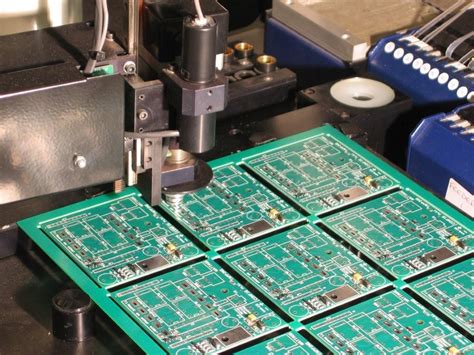
Applications Of Capacitive Touch Flex PCBs In Consumer Devices
Capacitive touch flex PCBs have become a cornerstone in the design and functionality of modern consumer devices, offering a blend of flexibility, durability, and responsiveness that traditional rigid PCBs cannot match.
These innovative circuit boards are integral to the seamless user experiences that consumers have come to expect from their electronic devices.
As technology continues to evolve, the applications of capacitive touch flex PCBs are expanding, making them indispensable in a variety of consumer electronics.
One of the most prevalent applications of capacitive touch flex PCBs is in smartphones and tablets.
These devices rely heavily on touch interfaces for user interaction, and the flexibility of these PCBs allows for the creation of sleek, lightweight designs that are both aesthetically pleasing and highly functional.
The ability to bend and conform to the contours of a device means that manufacturers can produce thinner and more ergonomic products without sacrificing performance.
Furthermore, the durability of flex PCBs ensures that these devices can withstand the wear and tear of daily use, maintaining their functionality over time.

In addition to mobile devices, capacitive touch flex PCBs are also widely used in wearable technology.
Smartwatches, fitness trackers, and other wearable devices benefit from the lightweight and flexible nature of these PCBs, which can be integrated into the compact and often curved designs of such products. The adaptability of flex PCBs allows for the incorporation of touch-sensitive controls on surfaces that would otherwise be challenging to equip with traditional rigid PCBs. This capability enhances the user experience by providing intuitive and easily accessible controls, which are essential for devices that are worn on the body.
Moreover, capacitive touch flex PCBs are increasingly being utilized in home automation systems.
As smart home technology becomes more prevalent, the demand for intuitive and responsive control interfaces grows. Flex PCBs enable the integration of touch-sensitive panels into a variety of home devices, from thermostats to lighting controls, offering users a seamless way to interact with their environment. The flexibility of these PCBs allows for creative design solutions, such as curved or irregularly shaped control panels, which can be tailored to fit the aesthetic and functional requirements of modern homes.
The automotive industry is another sector where capacitive touch flex PCBs are making a significant impact.
As vehicles become more technologically advanced, the demand for sophisticated control interfaces within the cabin increases. Flex PCBs are ideal for integrating touch-sensitive controls into the dashboard and other interior surfaces, providing drivers and passengers with easy access to navigation, entertainment, and climate control systems. The ability to incorporate these controls into non-flat surfaces enhances the overall design and functionality of the vehicle’s interior, contributing to a more streamlined and user-friendly experience.
In conclusion, the applications of capacitive touch flex PCBs in consumer devices are vast and varied, driven by the need for flexible, durable, and responsive touch interfaces. From smartphones and wearables to home automation systems and automotive controls, these PCBs are at the forefront of technological innovation, enabling the creation of devices that are not only functional but also aesthetically pleasing and user-friendly. As technology continues to advance, the role of capacitive touch flex PCBs in consumer electronics is likely to expand even further, paving the way for new and exciting applications in the future.

Manufacturing Process Of Capacitive Touch Flex PCBs
The manufacturing process of capacitive touch flex PCBs is a sophisticated and intricate procedure that requires precision and expertise. These flexible printed circuit boards are integral to modern touch-sensitive devices, offering both flexibility and durability. The process begins with the selection of appropriate materials, which is crucial for ensuring the performance and longevity of the final product. Typically, a flexible substrate such as polyimide is chosen due to its excellent thermal stability and mechanical properties. This substrate serves as the foundation upon which the circuit is built.
Once the substrate is prepared, the next step involves the application of a conductive material, usually copper, onto the substrate.
This is achieved through a process known as electroless plating, which deposits a thin layer of copper onto the surface. Following this, a photoresist layer is applied to the copper-coated substrate. The photoresist is a light-sensitive material that allows for the precise patterning of the circuit design. Using photolithography, the desired circuit pattern is transferred onto the photoresist by exposing it to ultraviolet light through a mask. The exposed areas of the photoresist are then developed, revealing the underlying copper.
Subsequently, the exposed copper is etched away using a chemical solution, leaving behind the desired circuit pattern.
This etching process is critical, as it defines the electrical pathways that will enable the capacitive touch functionality. After etching, the remaining photoresist is stripped away, revealing the clean copper circuit. To protect the circuit and enhance its durability, a layer of solder mask is applied. This insulating layer not only prevents short circuits but also provides a surface for soldering components.
The next phase involves the integration of the capacitive touch sensors.
These sensors are typically made from a transparent conductive material such as indium tin oxide (ITO). The ITO is deposited onto the surface of the flex PCB in a pattern that corresponds to the touch-sensitive areas. This step is crucial, as the accuracy and responsiveness of the touch sensors depend on the precision of the ITO patterning. Once the sensors are in place, the flex PCB undergoes a series of tests to ensure its functionality and reliability.
Following successful testing, the flex PCB is ready for the final assembly stage.
This involves attaching any additional components, such as microcontrollers or connectors, that are necessary for the operation of the device. The components are typically soldered onto the PCB using surface-mount technology, which allows for a compact and efficient design. Throughout the assembly process, quality control measures are implemented to ensure that each PCB meets the required specifications and standards.
In conclusion, the manufacturing process of capacitive touch flex PCBs is a complex and meticulous endeavor that combines advanced materials and technologies. From the initial selection of substrates to the final assembly of components, each step is carefully executed to produce a high-quality product. The result is a flexible, durable, and responsive touch-sensitive circuit that is essential for a wide range of modern electronic devices. As technology continues to evolve, the demand for capacitive touch flex PCBs is expected to grow, driving further innovations in their manufacturing processes.
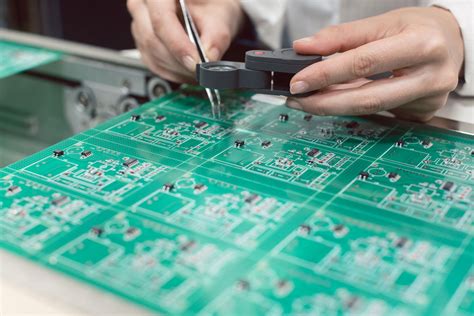
Future Trends In Capacitive Touch Flex PCB Technology
Capacitive touch flex PCB technology has been a cornerstone in the evolution of modern electronic devices, offering a seamless interface between users and machines. As we look to the future, several trends are poised to redefine this technology, enhancing its capabilities and expanding its applications.
One of the most significant trends is the miniaturization of electronic components.
As devices become smaller and more compact, the demand for flexible PCBs that can accommodate intricate designs without compromising functionality is increasing. This miniaturization is driven by advancements in materials science, which allow for the development of thinner, more flexible substrates that maintain high conductivity and durability.
In addition to miniaturization, the integration of advanced materials such as graphene and other nanomaterials is set to revolutionize capacitive touch flex PCBs.
These materials offer superior electrical properties, including higher conductivity and faster response times, which are crucial for enhancing the performance of touch-sensitive devices. Moreover, the use of these materials can lead to more energy-efficient devices, as they require less power to operate, aligning with the growing demand for sustainable technology solutions.
Another emerging trend is the incorporation of multi-touch capabilities in flexible PCBs.
As user interfaces become more sophisticated, there is a growing need for touchscreens that can recognize multiple points of contact simultaneously. This capability not only enhances the user experience but also opens up new possibilities for applications in areas such as gaming, virtual reality, and advanced computing. The development of multi-touch technology in flexible PCBs is facilitated by improvements in sensor technology, which allow for more precise detection of touch inputs.
Furthermore, the Internet of Things (IoT) is driving the demand for capacitive touch flex PCBs that can be integrated into a wide range of smart devices.
As IoT continues to expand, there is a need for flexible PCBs that can be embedded in various environments, from wearable technology to smart home devices. This trend is pushing manufacturers to develop PCBs that are not only flexible but also robust enough to withstand different environmental conditions, such as temperature fluctuations and exposure to moisture.
In parallel with these technological advancements, there is a growing emphasis on the customization of capacitive touch flex PCBs.
As industries such as healthcare, automotive, and consumer electronics seek to differentiate their products, the ability to tailor PCBs to specific applications is becoming increasingly important. This customization involves not only the design and layout of the PCBs but also the integration of specialized features such as haptic feedback and biometric sensors.
Finally, the future of capacitive touch flex PCB technology is also being shaped by advancements in manufacturing processes.
Techniques such as additive manufacturing and roll-to-roll processing are enabling more efficient production of flexible PCBs, reducing costs and increasing scalability. These processes allow for greater precision and consistency in PCB fabrication, which is essential for meeting the high standards required by modern electronic devices.
In conclusion, the future of capacitive touch flex PCB technology is bright, with numerous trends converging to enhance its capabilities and expand its applications. From miniaturization and advanced materials to multi-touch capabilities and IoT integration, these developments are set to transform the way we interact with electronic devices. As manufacturers continue to innovate and adapt to these trends, capacitive touch flex PCBs will undoubtedly play a pivotal role in the next generation of technology.

